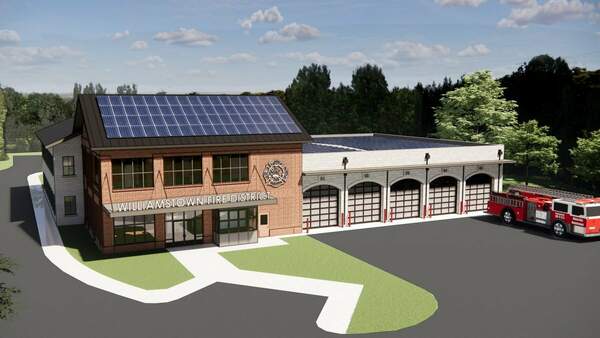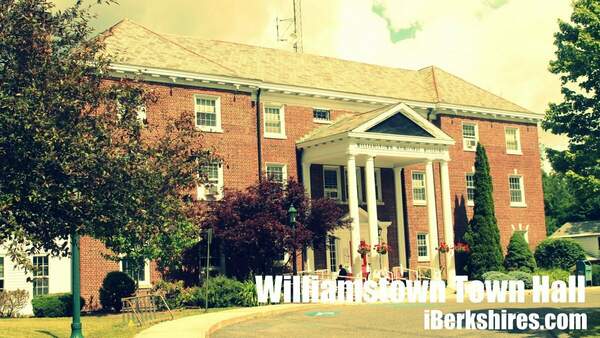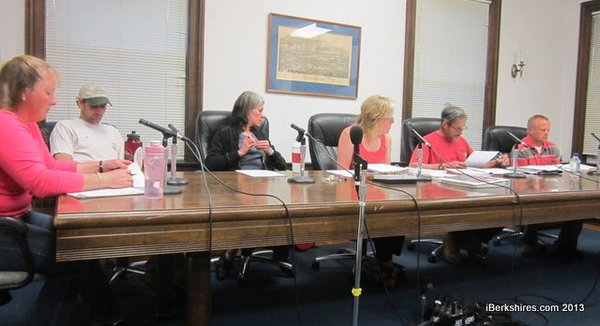
Ag Commission Aims to Educate About Farmland
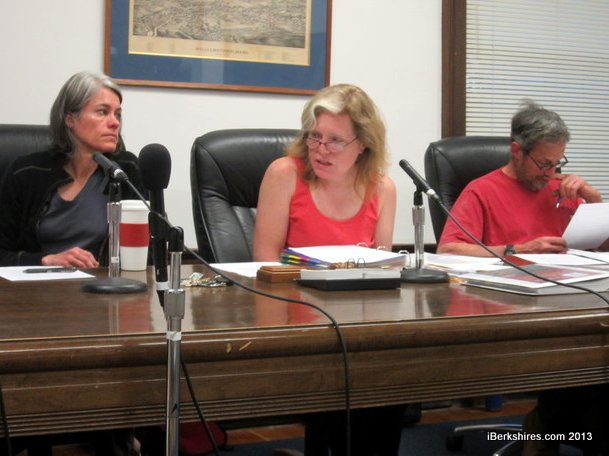 Agriculture Commisssion Chairwoman Beth Phelps, center, is flanked by Sarah Gardner and Kim Wells. Agriculture Commisssion Chairwoman Beth Phelps, center, is flanked by Sarah Gardner and Kim Wells. |
WILLIAMSTOWN, Mass. — The Agricultural Commission is making plans to take a more active role in the coming town discussions about the fate of the so-called Lowry property.
In its first meeting since last week's special town meeting chose to delay action on the status of town-owned land currently in conservation, the commission decided it is time to educate residents about that land's agricultural significance.
"The one thing we can do is put together a fact sheet," suggested Leslie Reed-Evans, an alternate on the commission, on Thursday. "There are lots of questions and misinformation and people asking why we can't find more hayfields. I think we should have something available to educate people."
Reed-Evans, alternate Sarah Gardner and Chairwoman Beth Phelps formed a working subgroup of the commission and made plans to compile such a fact sheet in time for distribution at the May 21 annual town meeting.
Among the topics they discussed for the handout is Lowry's status as "prime farmland," the highest in a series of classifications designated by the U.S. Department of Agriculture for land in agriculture.
"The characteristics — in addition to soil quality — include the lack of rock outcrops, slope and things that, in our hilly environment in the Berkshires are hard to come by," Phelps said.
The reason the Ag Commission is concerned about this particular property is that it has been identified by the town as a potential site for development of affordable housing.
Both the 30-acre Lowry property and the much larger Burbank property are town-owned lands currently in control of Williamstown's Conservation Commission, which licenses each parcel for use by local farmers.
One of those farmers is Kim Wells of East Mountain Farm, who hays the Lowry property. Wells is also a member of the Ag Commisison but largely stayed out of Thursday's discussion without actually recusing himself.
Wells did contribute this much on the issue of land use in town:
"What bothers me is the idea that it's an 'either or,' that we have so much land in open space, and that's why we don't have enough areas for housing," Wells said. "It's juts a false comparison. We're short on land for housing because we have a huge college in the middle of our town, which is a great thing, and and we have a huge golf course and we have a huge museum. There's a lot of town [land] we don't have use of. ... I'm talking about land in the center of town, serviced by water and sewer."
Accessibility of water and sewer lines is one of the advantages cited as an attraction of the Lowry property, which is located off Stratton Road.
Opponents of development and proponents of local agriculture point to the land's value in its current use. Wells uses the hay he cuts on Lowry to feed his beef cattle and as a cash crop to keep East Mountain Farm viable.
In addition to educating voters about the importance of the Lowry land, the Ag Commission hopes its information sheet will show the economic impact of local agriculture. The panel plans to include information about how many farms their are in town, how much acreage is used for agriculture, the value of that production and what sorts of locally grown foods are available for local consumers.
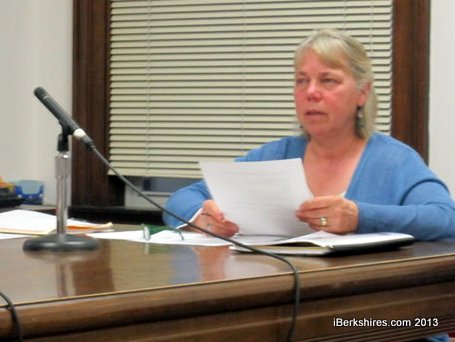 Leslie Reed-Evans suggested the commission put together a FAQ on farmland for the upcoming town meeting. Leslie Reed-Evans suggested the commission put together a FAQ on farmland for the upcoming town meeting. |
"Even things like how many people farms employ," Reed-Evans said. "I think the Galushas have eight full-time people. That's a small business, and there aren't many small businesses in Williamstown that employ that many people."
In other business, the Ag Commission was updated on plans for the town's farmers market, which is scheduled to return on Saturday, May 25, from 9 a.m. to 1 p.m., at the bottom of Spring Street.
The market will expand this year to include more than just a portion of the parking lot and more than just locally grown produce, Phelps explained.
"The steering committee has been meeting since October, and they have done an incredible amount of work," she said. "They found a market manager, Richie Doucette. He's all fired up. ... They've applied for a Fund for Williamstown grant and got that, for $1,500, which will help get entertainment, live music, at the farmer's market.
"I think it's going to be a lot more vibrant with a bigger budget for advertising, marketing and promotions."
Information about the farmers market, including how growers and producers can buy space at the event, will be available on the commission's website at www.williamstownfarms.com.
Tags: agricultural commission, conserved land, farmland, lowry property,

 WILLIAMSTOWN, Mass. — The Prudential Committee on Wednesday signed off on more than $1 million in cost cutting measures for the planned Main Street fire station.
WILLIAMSTOWN, Mass. — The Prudential Committee on Wednesday signed off on more than $1 million in cost cutting measures for the planned Main Street fire station.